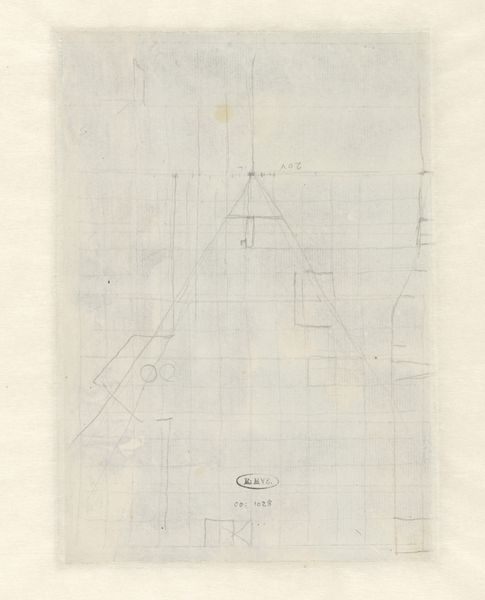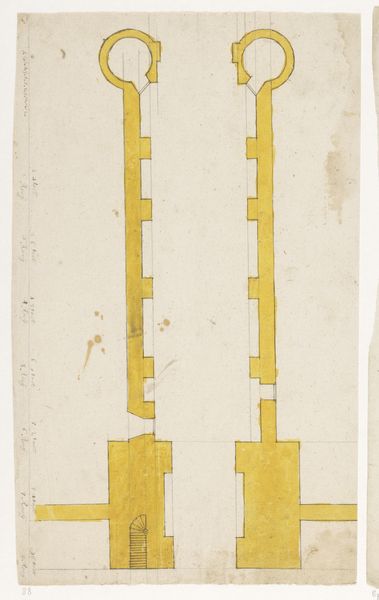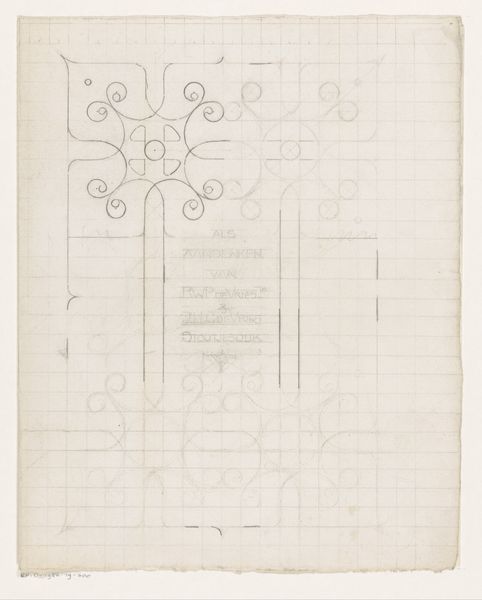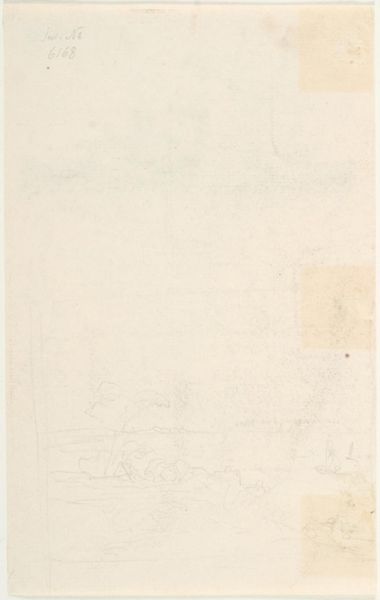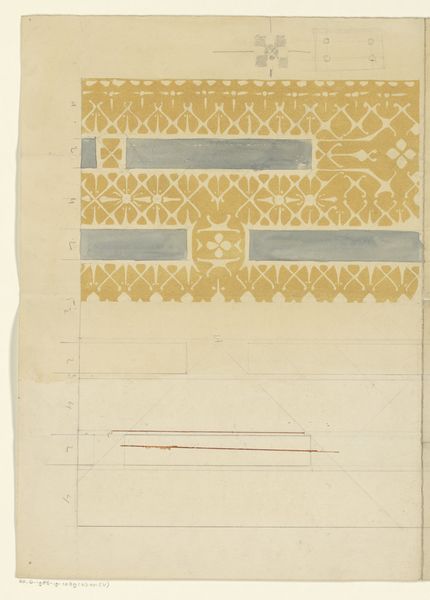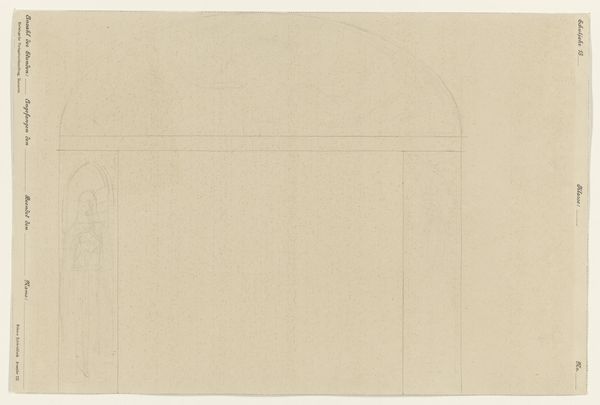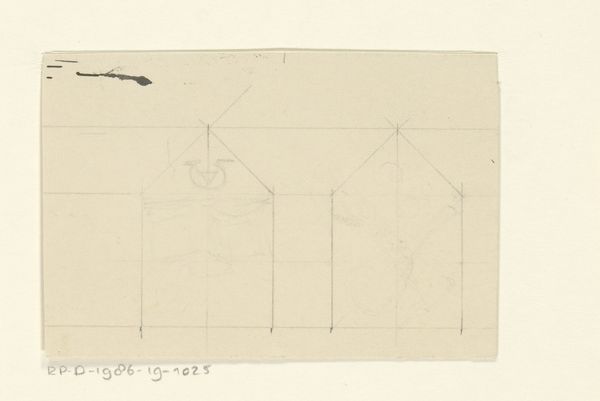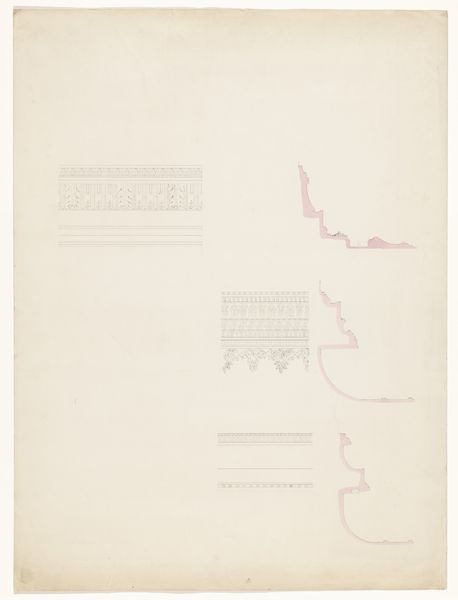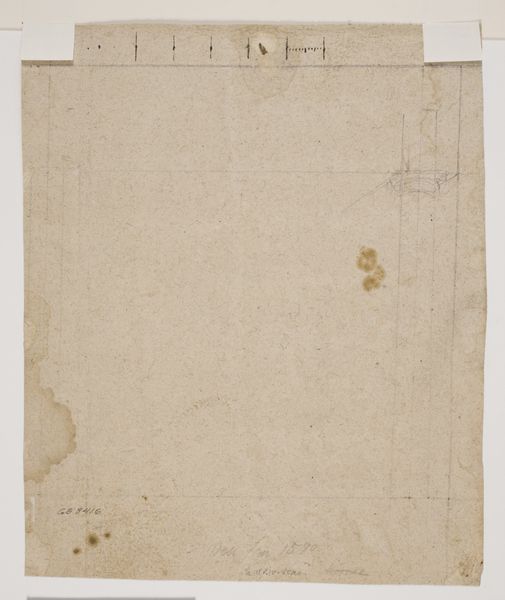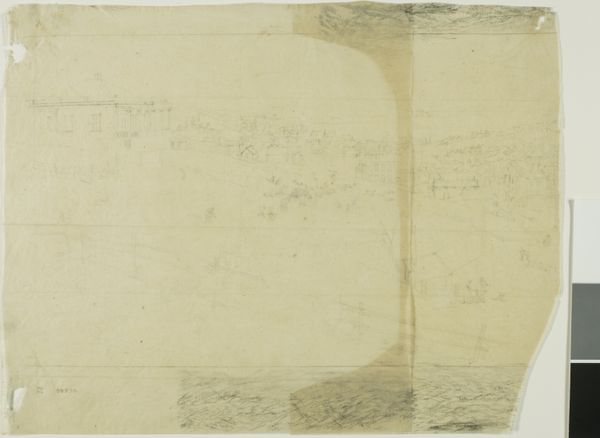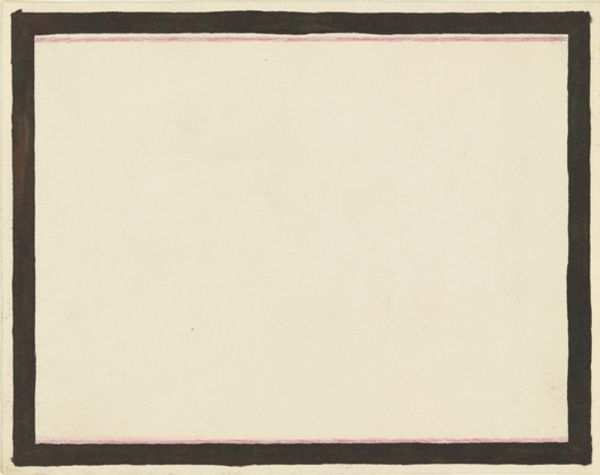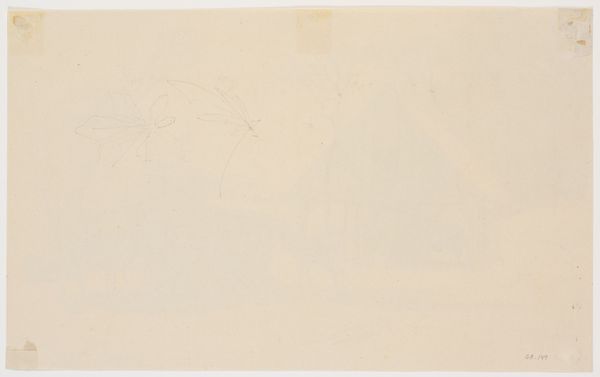
Rechthoekig kader met vlakverdeling en twee ornamenten 1884 - 1952
0:00
0:00
drawing, paper, pencil
#
drawing
#
paper
#
form
#
geometric
#
pencil
#
line
#
sketchbook drawing
#
watercolour illustration
Dimensions: height 435 mm, width 303 mm
Copyright: Rijks Museum: Open Domain
Editor: Here we have "Rechthoekig kader met vlakverdeling en twee ornamenten," or "Rectangular frame with plane division and two ornaments," created between 1884 and 1952 by Reinier Willem Petrus de Vries. It's a pencil drawing on paper, very architectural. What do you see in this piece, especially given the period it was made? Curator: This drawing, with its meticulous lines and geometric divisions, provides insight into the socio-political landscape of design and craftsmanship. The grid, far from being merely organizational, represents the burgeoning industrial era, a drive for standardization and control that sought to impose order, but against that impulse we have the very handmade quality of the sketch, and the ornamental elements that nod towards the desire for beauty, decoration, the human element in life. Consider the two ornaments: How might these stylized forms challenge the rigidity of the grid? Editor: That's a good point, the ornaments feel like they are fighting against the grid's order, attempting to inject an organic feel. Could the composition reference othering and marginalization, something about identity? Curator: Precisely. These are the tensions and dialogues inherent in design - functionality versus beauty, standardization versus individual expression. The drawing speaks to broader anxieties around the machine age and the loss of traditional crafts, echoing debates found within the Arts and Crafts movement, or even early modernist ideologies that were beginning to reshape society. Who benefits, and who is left out of those changing times? The answer might be implicit in the emptiness of the large central space. Editor: I didn't initially connect it with those social issues. I was too focused on the visual aspect. Thanks! Curator: Indeed. Viewing art as an intersection of intention, medium, and social conditions allows for a far more robust engagement, prompting critical dialogue with our present.
Comments
No comments
Be the first to comment and join the conversation on the ultimate creative platform.
